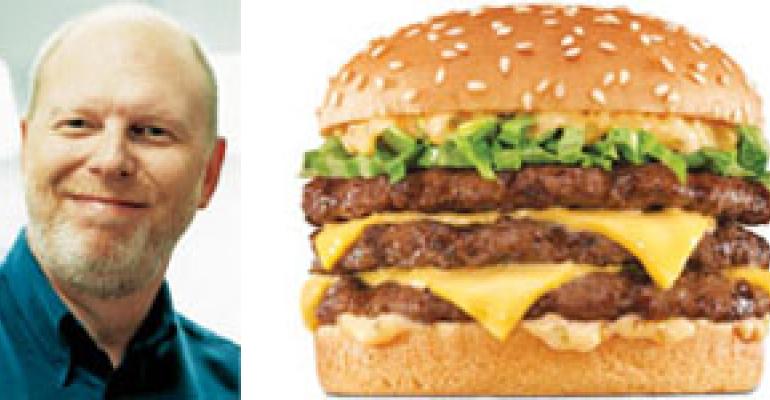During the height of the recession, consumers flocked to fast food as a less-expensive dining-out option, but even that segment is starting to lose sales momentum as the slowdown drags into a prolonged recovery.
For instance, McDonald’s U.S. same-store sales were up only 1.7 percent in August, following increases of 2.6 percent in July and 2.8 percent in May. Yum! Brands Inc.’s blended same-store sales were down 1 percent in its most recent second quarter and 2 percent year-to-date, due mainly to weakness in its Pizza Hut brand. And at Wendy’s, North American same-store sales turned negative in the second quarter, falling 0.4 percent, after jumps of 1 percent and 3.7 percent in the prior two quarters.
Even if the worst of the recession is over, there won’t be any quick fixes for quick service, says Tom Miner, principal of Chicago-based research firm Technomic.
“I’m of the opinion that two or three years from now, we’ll still be feeling sales volume effects of this recession,” Miner says. “Consumers have their thumb on the reset button and are holding it down.”
Brad Haley, executive vice president of marketing for CKE Restaurants, the parent of the Carl’s Jr. and Hardee’s quick-service brands, agrees that the industry is in no- or slow-growth mode for the near future.
“For the industry to start to grow in a meaningful way, unemployment has to come back down,” Haley says. “Depending where you are, that’s likely to happen late next year. It’s a share-stealing game in the meantime, and demonstrating that you have good value for the money.”
The fight for market share and perceived value intensified after McDonald’s rolled out in July its Angus Third Pounder item, entering the premium-burger territory CKE’s chains claimed years ago with the Six Dollar Burger at Carl’s Jr. and the Thickburger at Hardee’s.
CKE responded with funny, combative ads and by rolling out the Big Carl and the Big Hardee, which aim to undercut the Big Mac on price while providing more beef and cheese. The company wanted to change what it thought was a misperception about Carl’s Jr. and Hardee’s as providers of high quality but not necessarily value, Haley says.
“We know we can make a great burger at relatively high price points, but it’s difficult to make one at a dollar,” he says. “But we found a way with these products to offer a great burger at the $2 to $2.49 range.”
CKE also upped its coupon activity this past year. Haley says the easing of commodity costs gave CKE “some wiggle room,” allowing it to increase coupon handouts.
Miner of Technomic says quick-service brands should market new value-focused products like CKE and McDonald’s are doing, but they should also put significant marketing muscle behind their core menu as they shore up their unit economics on the long road to recovery.
“Restaurants with large menus are going to feel stress for profitability because of the higher cost of goods sold that comes with a broader menu,” he says. “Because consumers are spending less and going to restaurants less frequently, they’re going for signature products or particular experiences.”
He cites research pointing out that 80 percent of a restaurant’s sales are driven by 20 percent of users. That audience of core customers gets excited to try new items, he says, while most guests—that other 80 percent, made up of infrequent users—are more likely to stick with menu items and experiences they know in times of economic stress. For that reason, Miner says, promoting signature products is the way to speak to the needs of those guests.
Miner says he thinks a return to normal spending may arrive, after a long and gradual climb, by the third quarter of 2010, once consumers figure out the equilibrium on their rates of personal saving and the industry “comes through the doldrums of January and February.”— [email protected]

